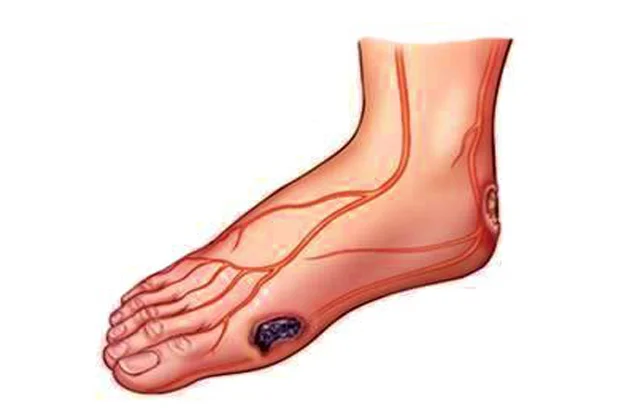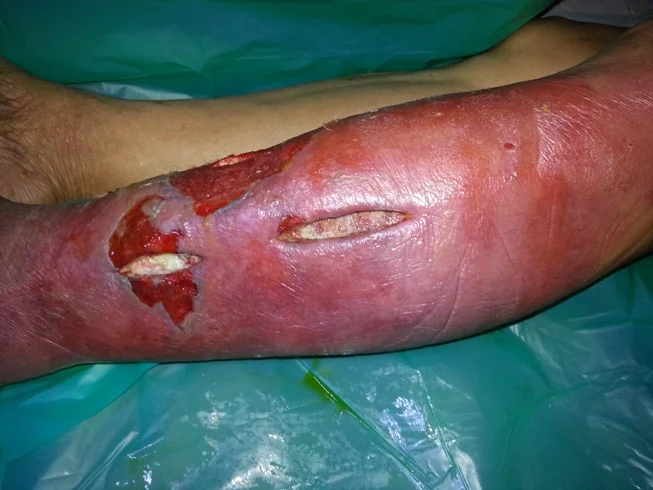As diabetic patients age or the duration of diabetes increases, they may develop diminished sensation and decreased peripheral circulation in the feet and thus are at an increased risk of developing foot infections, especially in those will poorly regulated diabetes.
Common Problems in Diabetic Foot:
1. Decreased Blood Supply (Ischaemia):
The ischaemic leg, besides absent or reduced pulses, also has other characteristic features.The skin may become thin and there is usually loss of hair on the foot and ankle. Fissures are very common and ulcers may be painful. It may also be cold to touch.
2. Decreased Sensation (Neuropathy):
The neuropathic foot also has some characteristic features. The feet tend to be warm and dry and relatively insensitive to touch. Neuropathy may affect the muscles of the foot causing clawing of the foot. All this causes the fat pads covering the bones of the feet to be moved away from its position. Thus exposing it to weight bearing areas. Any weight bearing area without adequate protection tends to open and form a wound called as an ulcer. In order to protect the leg, nature offers a mechanism by which it thickens the skin to avoid forming a wound. This protective mechanism will lead to problems such as callus and corns in later stages due to irritation of the tissues beneath. These can break down and lead to ulcers.

